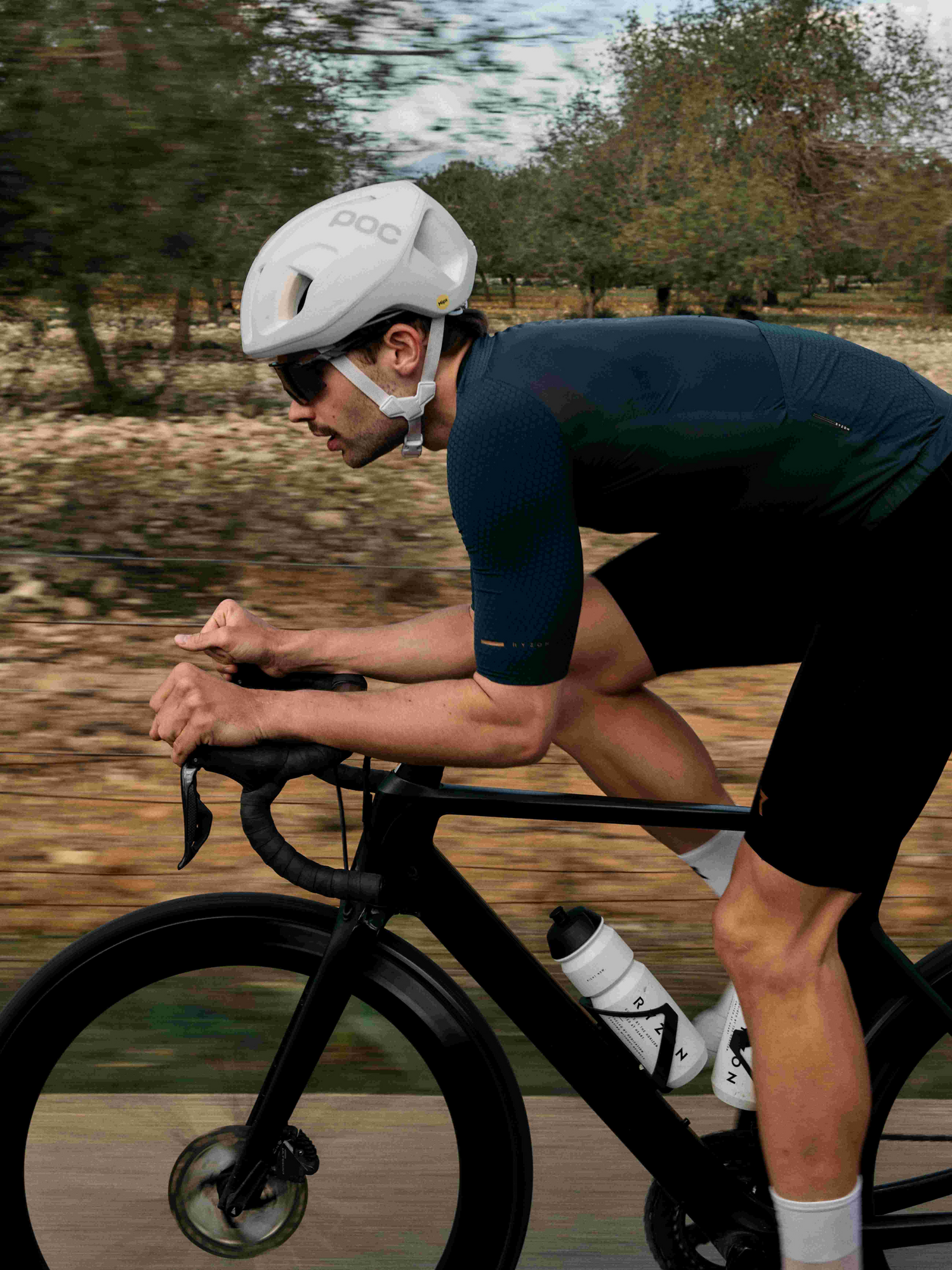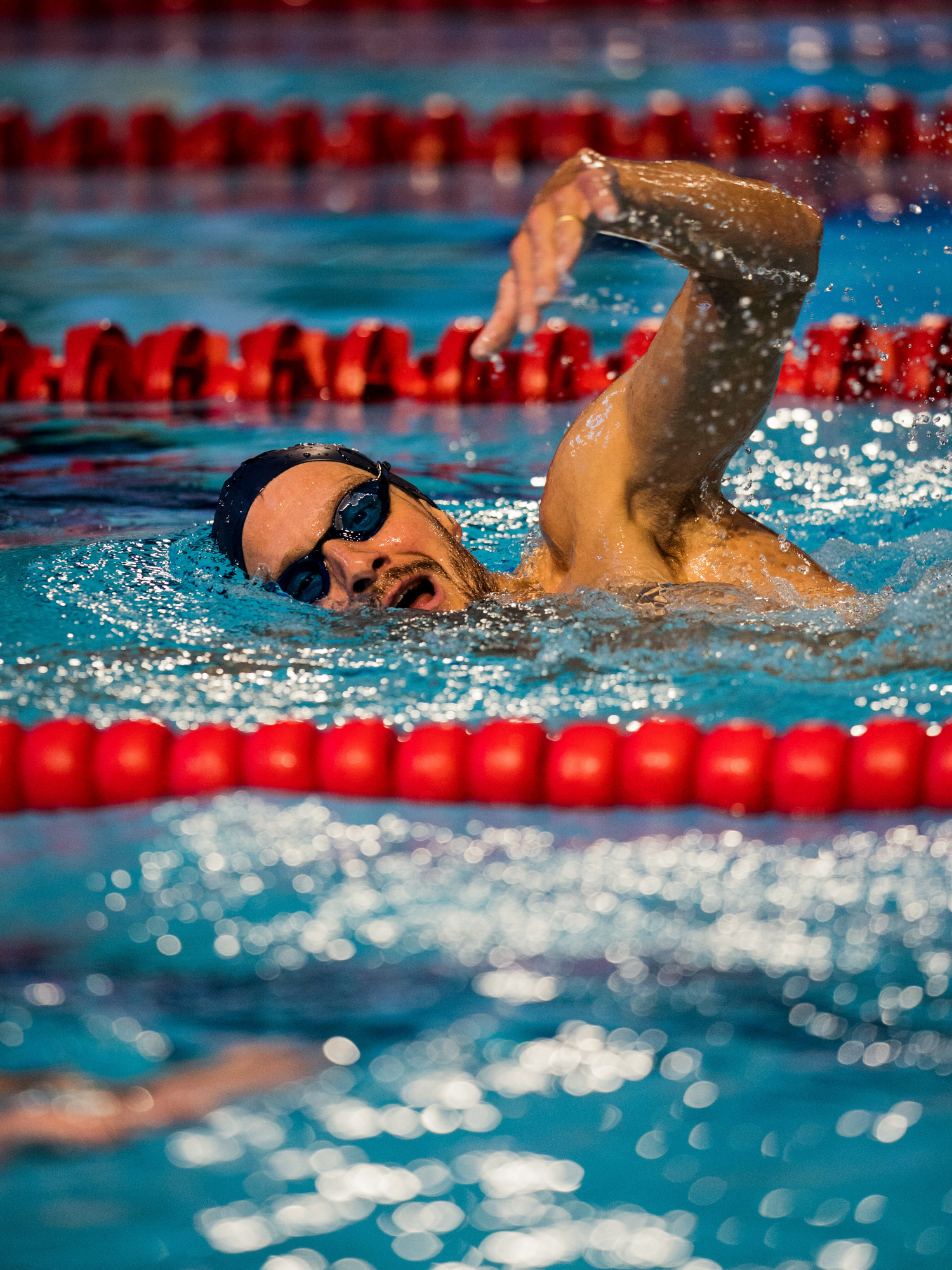Trainingsbereiche im Ausdauersport
High endurance - the be-all and end-all in triathlon
Triathlon is a demanding sport that combines swimming, cycling and running. In order to be successful, not only strength and speed, but above all a high level of endurance is required. Triathletes have to endure for a long time and at the same time be able to recover quickly from stress. This forms the basis for intensive training and optimal competition performance.
Basic endurance training – the key to success
Targeted basic endurance training increases performance and enables you to master demanding training sessions. Various training methods such as basic endurance, speed training and intervals help improve endurance.
Diversity in training – variety and effectiveness
It is not necessary to complete all training sessions in the same discipline. Cycling and swimming can be just as effective as running. Through varied training in the three disciplines, triathletes optimize their endurance and increase their general performance.
Important points for effective basic endurance training:
- Long, consistent training stimulus: Long training sessions with moderate intensity form the basis of basic endurance training.
- Integration of various training areas: Intervals, speed training and relaxed units complement the training and ensure optimal endurance development.
The following section describes the different training areas in more detail.

Training area 1: regeneration training
Regenerate relaxed and effectively
Training area 1 includes regeneration training, which serves active recovery and personal well-being. In the form of the continuous method, you train relaxed with low intensity (up to 60% of the maximum heart rate) for 20 minutes to a maximum of 1 hour.
Benefits of regeneration training:
- Faster recovery after intense exertion
- Increasing well-being and general health
- Avoiding overtraining and injuries
- Promoting performance
Practical application (for running, transferable to other sports):
Runners know regeneration training as a regeneration run or shakeout run, in which the legs are loosened and shaken out. But other sports such as swimming or cycling are also ideal for this form of training.

Training area 2: Basic endurance 1 (GA1)
Fat metabolism training for more endurance
Training area 2 (GA1) focuses on improving basic endurance and fat metabolism. With low intensity (60-75% of maximum heart rate) you train effectively and gently for 30 minutes to 3 hours.
Benefits of GA1 training:
- Effective fat burning
- Improved endurance performance
- Health promoting
- Also suitable for older people
Practical application:
GA1 training can be transferred to different sports. Depending on the training goal and individual preference, runners, cyclists or swimmers can use this method. The duration of the training units can vary, with longer units being particularly relevant for endurance athletes who want to complete a marathon or triathlon.
During training, the intensity should be chosen so that a casual conversation is still possible. Advanced athletes can also train on an empty stomach to stimulate fat metabolism even more intensively.
In order to achieve the optimal training effect, it is important to keep the intensity constant throughout the entire session. Beginners should therefore initially stick to shorter training sessions and gradually increase the intensity.
Regular GA1 training is an important part of any training plan to improve endurance performance and fat metabolism.

Training area 2: Basic endurance 2 (GA2)
Training area 2 (GA2) focuses on increasing performance through intensive training in the range of 75-85% of the maximum heart rate.
Benefits of GA2 training:
- Improved functionality of the cardiovascular system
- Structural adaptations of the heart
- Basis for higher speeds
- performance increase
Practical application:
GA2 training can be implemented using various methods such as interval or tempo training. The duration of the training sessions varies between 20 and 60 minutes, but can be extended to up to 15-25km in marathon training.
During training, the intensity should be chosen so that a conversation is still possible, but is strenuous.
In order to achieve the optimal training effect, it is important to keep the intensity constant throughout the entire session. Beginners should therefore initially stick to shorter training sessions and gradually increase the intensity.
GA2 training can be done 1-4 times per week. However, sufficient regeneration days are important.

Training area 4: Development area (EB)
Push the limits and maximize performance
Training area 4 (EB) focuses on the maximum utilization of performance parameters through intensive interval training close to the anaerobic threshold (85-95% of the maximum heart rate).
Benefits of EB training:
- Increasing maximum endurance performance
- Deep adaptations of the cardiovascular system
- Improved lactate tolerance
Practical application (for running, transferable to other sports):
The EB training can be designed using various interval methods and tempo-changing runs. The duration of the training sessions varies between 30 and 60 minutes . Interval training means that exercise and rest phases alternate. Changing tempo running means that the pace is increased and decreased several times during training.
It is important that you regenerate sufficiently between training sessions (at least 24-48 hours). Gradually increase the intensity and duration of your workout, starting with shorter workouts and longer breaks. Listen to your body and give it enough rest.
EB training is very intensive and should only be carried out by well-trained athletes. Beginners should first get used to training areas 1-3.
Before every workout, you should warm up well and then stretch. Drink enough water during training and eat a healthy diet.
With the right training and sufficient recovery, you can continuously improve your performance in EB training.
Endurance training equipment
Especially with basic endurance training, training could be based purely on body feeling. Nevertheless, technical devices and appropriate equipment are available to optimize training. Especially if the athlete has ambitions.
Technical devices for performance monitoring
- Sports watch
- Pulse belt
- Programs/apps for performance evaluation
- Home trainer
Clothing for training optimization
